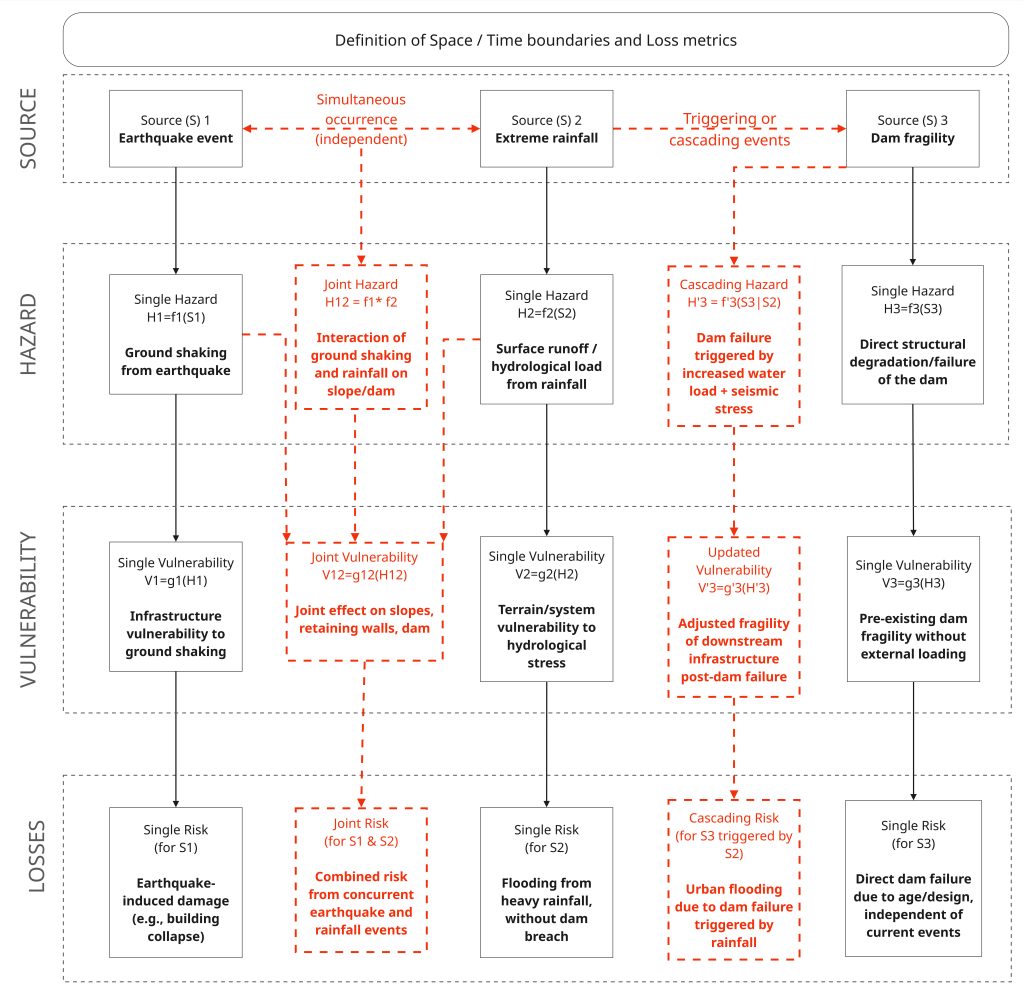As part of its ongoing work, IPK is developing a database of relevant attributes for each case study area, including population, urban area characteristics, cultural heritage, natural resources, and transport infrastructure. Significant efforts were dedicated in collecting and analysing the required data, due to fragmented data sources, limited data availability, and variations in data quality and accessibility. Therefore, recommendations on future data management will be part of the task’s outputs.
The ongoing activities are focusing on the development of Bayesian Belief Network (BBN)-based risk assessment methodology tailored to urban critical infrastructure. Building on the foundations of the CROSScade project, IPK is adapting this approach to complex urban environments, where cascading multi-hazard scenarios can have significant impacts on interconnected systems. In developing the BBN for urban hazard scenarios, the number of possible variable combinations quickly increases as new factors are added. Each variable is represented through conditional probabilities, and to keep the model both realistic and manageable, the Conditional Probability Tables (CPTs) are built using a mix of data, model results, and expert inputs. For the earthquake–flood scenario, the BBN includes:
- Primary hazard variables – such as earthquake magnitude, rainfall intensity, and soil saturation.
- Secondary system variables – including soil liquefaction potential, dam or levee stability, and water levels in reservoirs.
- Impact variables – covering outcomes like urban flooding, infrastructure damage, and disruption of essential services.
This setup helps capture how one hazard can trigger another, offering a clearer and more dynamic view of cascading risks in urban areas.

